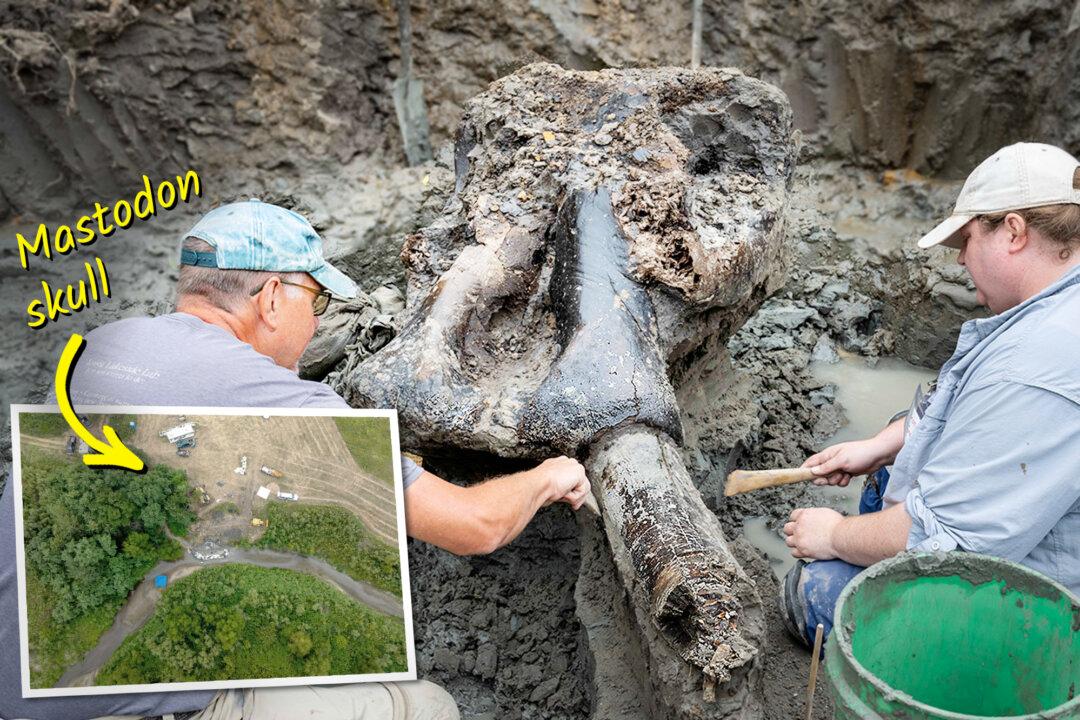Stone tools of scraggly men dressed in furs could have cut into the gargantuan bones of a mastodon during its skinning and butchering over 13,000 years ago, after they'd felled it in what is now southern Iowa.
To uncover evidence of early ways of life in North America would be a scientific first, but recently tantalizing clues have been found half embedded in a creek. Bones are already being dug up.






